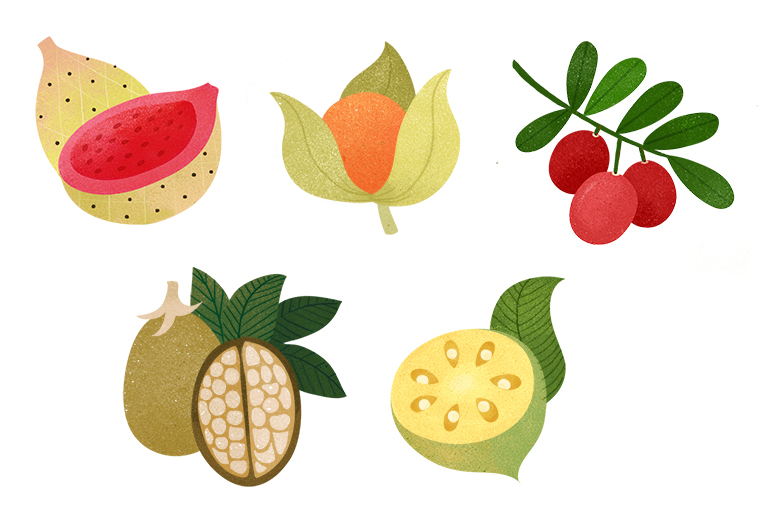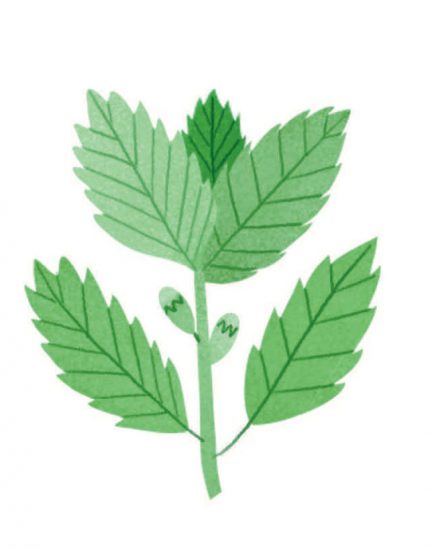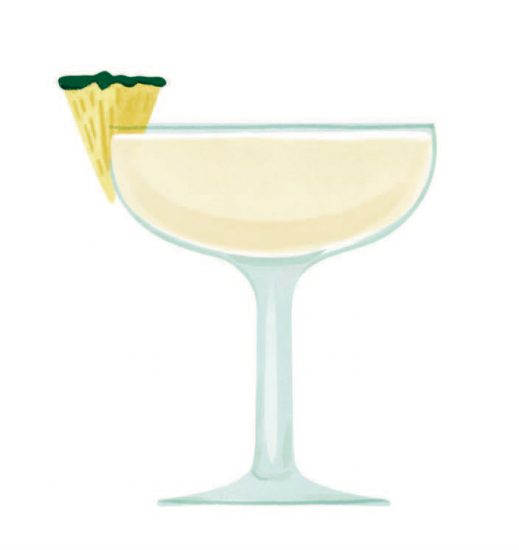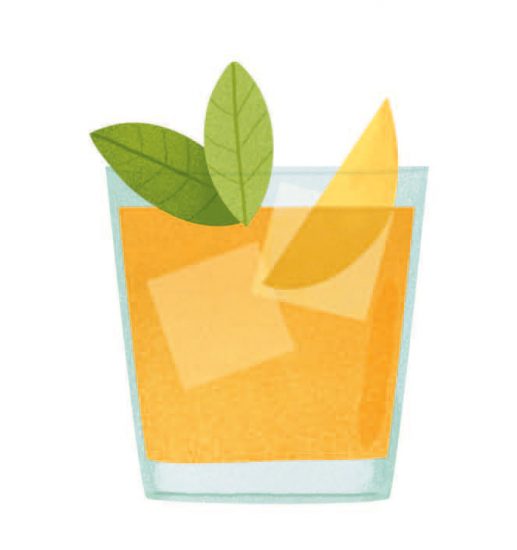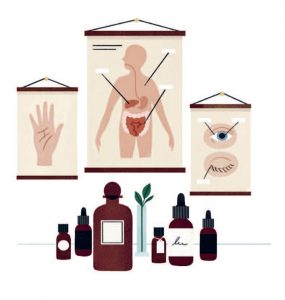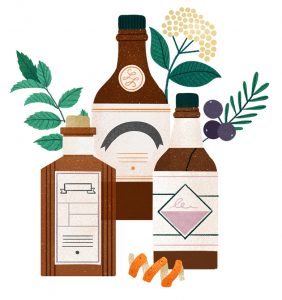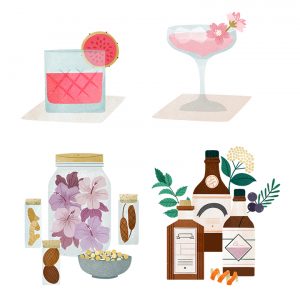
Botany at the Bar: The Art and Science of Making Bitters (Roost Books, 2019), is a handsome book written by a trio of scientists (and founders of Shoots & Roots Bitters)—Selena Ahmed, Ashley Duval and Rachel Myer—who set out to explain what happens when alcohol and phytochemistry meet. So often we know what happens, but not why.

It is an appealing title for anyone leaning toward plant geekiness—the botanists, the biologists, the foragers and the gardeners, but also to everyone who drinks and who is sentient: So much of what we tip down our receptive throats has its origins in the plant world.
In these pages “bitters” is a catch-all; it includes aperitifs, digestifs, liqueurs, vermouths and amaros. In the introductory chapter the authors outline the history and cultural origins of well-known bitters with a handy map of their distribution around the globe. We see Campari in Italy, Chartreuse in France, Peychaud’s in the U.S. and…Caperitif in South Africa? That vermouth hit market shelves just four years ago and its inclusion represents a triumph of marketing over tradition, as its links with the past are very tenuous. By the same token many modern vermouths should be on the map.

One of the most interesting discussions in Botany at the Bar is titled “Bitters and the Body,” where the authors describe bitters as being “classified on the basis of their physiological effects on the human body.” They divide them into three categories: medicinal, digestive and “bitters for stress.” The section on digestive bitters is compelling and explains their effect physiologically (what and how). Oddly, it ends in a paragraph where cardamom is included as an example of the celery family (Apiaceae). Cardamom is not remotely related to celery; it belongs to the ginger family, Zingiberaceae. The section on stress is less satisfying, with a statement like “adaptogenic bitters boost your body’s ability to adapt and recover…”—setting up the what, but minus the how.
Another quibble: “The Plant Directory” near the end of the book lists plants as ingredients according to their distribution. As a seasonal vermouth maker I was curious about mugwort, as it is a staple in my infusions. Curiously, there is no mention of the well-documented presence of thujone in the plant. In high doses it is toxic (thujone is mentioned in the entry for Thuja, the tree commonly known as arborvitae). It is impossible to list all of a plant’s attributes succinctly, but I am left with a sense of incompletion.
Quibbles aside, the main events are wonderful, specifically “How to Make Bitters” and “Bitters at the Bar,” in Chapters 4 and 5. This is where Botany at the Bar shines. With contributions from Christian Schaal, Kevin Denton and Jim Merson, the recipes are mouthwatering—from base bitters (Black Bear’s Bitters features native American plants) to cocktails, syrups (Curry Leaf, Apple and Kampot Pepper Syrup is calling me) and shrubs. Some are inspiringly imaginative. They will provide hours—years, even—of creative fun, sipping enjoyment and analysis.
In terms of sourcing some of the exotic ingredients required for the bitters, it is the big city dweller (or the person at whose door UPS stops) who will benefit most from the guide. The more cultural diversity at your doorstep, the better your chances of local procurement. And no matter where you are from, you will recognize a plant from home. It is worth the extra carbon miles to find the rest.

As a forager I love the inclusion of wild plants and blends, and as a South African I am charmed by the presence of honeybush, a plant I have foraged in Cape Town. To make the cocktail Bettysbaai (page 89) I must blend honeybush tea with Demon Flower Bitters (page 64). To make that all I need is devil’s dried hand flowers, jasmine flowers, pau d’arco bark, sambong leaves, uchuva fruit, blue skullcap flowers, dong quai root, propolis and…
Even for someone well versed in plants, finding some of these ingredients will be a challenge. In talking about sourcing the sometimes daunting list of ingredients, the authors do not suggest growing them. Many of these plants can in fact be grown in personal or communal kitchen gardens, or even indoors, and intrepid mixologist-gardeners will be a step ahead.
Whether you brew your own bitters or enjoy the conjury of your favorite alchemist, you will better appreciate what you are doing or how you are perceiving its flavors, after delving into the pages of Botany at the Bar. For me the science is a hook that took a back seat, while the flavors and scents and their combinations drove this very interesting guide.
Images from Botany at the Bar by Selena Ahmed, Rachel Meyer, and Ashley DuVal © 2019 Selena Ahmed, Rachel Meyer, and Ashley DuVal. Reprinted in arrangement with Roost Books, an imprint of Shambhala Publications, Inc. Boulder, CO.


